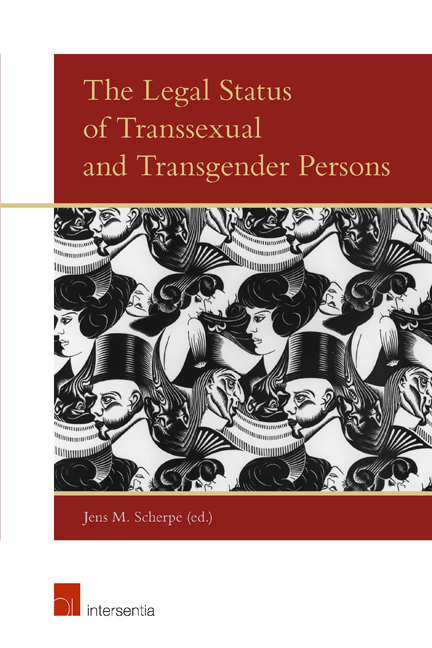Book contents
- Frontmatter
- Dedication
- Preface
- Contents
- List of Contributors
- Introduction
- PART I MEDICAL/PSYCHOLOGICAL VIEWS
- PART II CHRISTIAN VIEWS
- PART III LEGAL VIEWS
- Europe
- Belgium and the Netherlands
- Czech Republic
- Denmark
- England and Wales
- Germany
- Ireland
- Italy
- Spain
- Sweden
- Turkey
- Asia
- Australia and New Zealand
- North and South America
- PART IV CONCLUSION
Spain
from Europe
Published online by Cambridge University Press: 28 November 2017
- Frontmatter
- Dedication
- Preface
- Contents
- List of Contributors
- Introduction
- PART I MEDICAL/PSYCHOLOGICAL VIEWS
- PART II CHRISTIAN VIEWS
- PART III LEGAL VIEWS
- Europe
- Belgium and the Netherlands
- Czech Republic
- Denmark
- England and Wales
- Germany
- Ireland
- Italy
- Spain
- Sweden
- Turkey
- Asia
- Australia and New Zealand
- North and South America
- PART IV CONCLUSION
Summary
LEGAL FRAMEWORK AND BACKGROUND
In 2007, Spain introduced a new statute-based system for permitting individuals to obtain legal recognition of their preferred name and gender. Act 3/2007 of 15 March, which regulates the amendment of one's gender marker in the Civil Registry, allows a person whose gender identity does not match his or her assigned legal gender to modify the gender marker in the Civil Registry and change his or her name, provided that certain requirements have been met. The Act was passed during a period of left-wing, liberal reforms in Spain's family law, including the legalisation of same-sex marriage and the establishment of a regime of unrestricted divorce.
Prior to 2007, in the absence of statutory regulation, courts had already begun to permit individuals to obtain legal gender recognition. However, this recognition could only be granted by a court. According to the jurisprudence of the Spanish Supreme Court, whose leading case in this period dates back to 1987, ‘transgenderism’ was defined as a psychological pathology consisting in ‘an overwhelming feeling of belonging to the opposite sex, a rejection of one's own sex, and an obsessive desire to change the genital morphology’. The Supreme Court's decisions established a series of conditions which applicants for legal gender recognition were required to satisfy. Applicants were required to submit to hormone treatment and undergo gender confirmation surgeries (whether or not desired). These medical interventions were intended to suppress secondary sexual characteristics, remove primary sex characteristics and implant artificial sexual organs corresponding to those sex characteristics associated with the applicant's preferred gender. Although the Supreme Court allowed for the recognition of preferred gender (on the basis that the applicant suffered from a psychological disorder and had altered his or her physical body), the Court nevertheless maintained that such recognition was, in reality, ‘a legal fiction’. Therefore, it did not result in the individual obtaining recognition for all legal purposes. The extent of the ‘fiction’ would be determined on a case-by-case basis. In particular, marriage with a person of the same ‘chromosomal sex’ remained prohibited.
Before Act 3/2007, the Supreme Court's case law had already been partly challenged by a number of lower court decisions. Lower courts did not always require full gender confirmation surgery, especially where the applicant for gender recognition was a female-to-male (FtM) transgender individual.
- Type
- Chapter
- Information
- The Legal Status of Transsexual and Transgender Persons , pp. 261 - 280Publisher: IntersentiaPrint publication year: 2015



